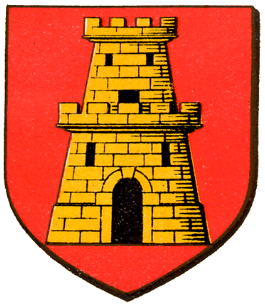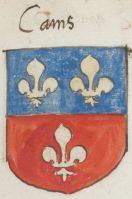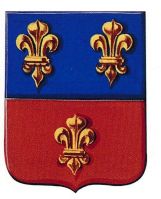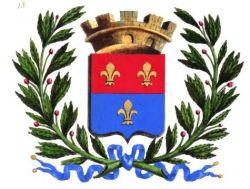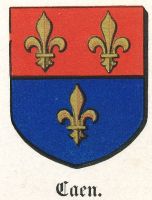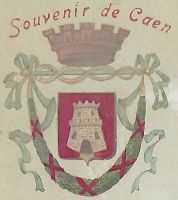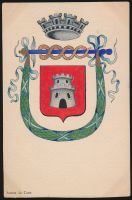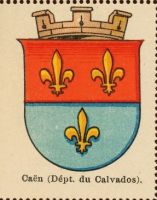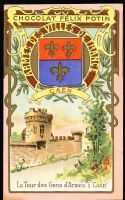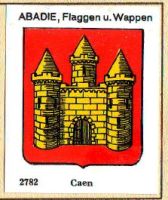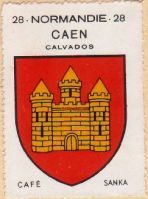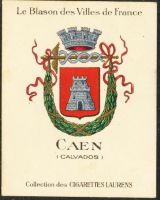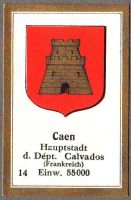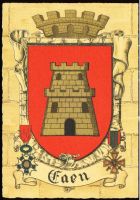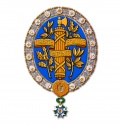Caen
|
Country: France Département: Calvados |
| French | De gueules à la tour crénelée de cinq pièces et donjonnée d'or, maçonnée, ajourée et ouverte de sable. |
| English | blazon wanted |
Origin/meaning
The arms of Caen date from the 15th century and initially showed three fleur-de-lys on a divided shield. The meaning is not known, but the three fleur-de-lys do indicate a royal connection (to Charles VII).
In 1811 Napoleon granted arms with a castle and the three bees of a city of the first class in chief. The fleur-de-lys were considered a royal symbol and thus had to be replaced. Why a castle was chosen is not documented.
In 1816 the city returned to the historical arms with the blue field in the upper half. In 1830 the city adopted again the arms with the tower, but without the bees. Images however, still show the old arms, but with the colours of the field changed, with the red now as the upper field. During the reign of Napoleon III the arms with the tower and bees were shortly reinstated. Afterwards both the arms with the fleur-de-lys as well as the tower have been used, with the latter being the most common since the early 20th century.
The shape and colours of the tower have been shown rather differently during the century though, see images below.
Image gallery
The arms in a 16th century manuscript
The arms in the Wappen-Sammlung (+/- 1910)
The arms on a trade card, 1920s
The arms in the Abadie albums
The arms in the Café Sanka album +/- 1932
The arms on a tobacco card by Laurens
The arms in a 1930s album
The arms on a Barré Dayez Postcard
The arms on a postcard by Kroma
Literature: Louis, 1949
French heraldry portal
This page is part of the French heraldry portal |
Heraldry of the World |
|
French heraldry:
Overseas territories:
|
Selected collector's items from France:
|
Contact and Support
Partners:
Your logo here ?
Contact us
© since 1995, Heraldry of the World, Ralf Hartemink 
Index of the site
